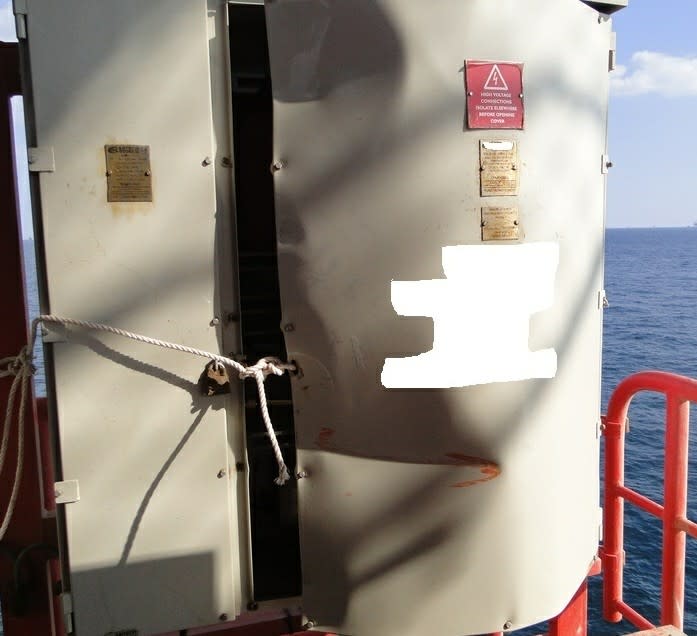The system:
This is at one of the oil producing offshore Well Head Towers (WHT). The electrical power to this WHT is supplied through 6.6kV submarine cable. The cable is terminated in an Ex 'e' junction box installed above the boat landing level. The system is energized about an year ago.
This is an unmanned tower. The junction box has hinged door, bolted while fully closed.
Incident:
Recently, during the visit to the WHT the junction box door was found ruptured and left hanging on the junction box (JB). However there is no charred marks inside the JB. The connections are found intact.
The 6.6kV connection is not covered with insulation boot. Now there is an argument that there could be some ionization inside the box due to the exposed 6.6kV terminal thus releasing the hydrogen. The accumulated hydrogen must have resulted in an explosion, thus rupturing the JB door.
There is another school of thought which argues that there could be some chemical reaction inside the cable insulation thus generating the hydrogen and which must have reached and accumulated in the JB cavity.
Now the question:
Does anyone has such experience of hydrogen gas generation and accumulation in the cavities in the oil producing towers?
If you can share your experience, it would be very helpful to me.
This is at one of the oil producing offshore Well Head Towers (WHT). The electrical power to this WHT is supplied through 6.6kV submarine cable. The cable is terminated in an Ex 'e' junction box installed above the boat landing level. The system is energized about an year ago.
This is an unmanned tower. The junction box has hinged door, bolted while fully closed.
Incident:
Recently, during the visit to the WHT the junction box door was found ruptured and left hanging on the junction box (JB). However there is no charred marks inside the JB. The connections are found intact.
The 6.6kV connection is not covered with insulation boot. Now there is an argument that there could be some ionization inside the box due to the exposed 6.6kV terminal thus releasing the hydrogen. The accumulated hydrogen must have resulted in an explosion, thus rupturing the JB door.
There is another school of thought which argues that there could be some chemical reaction inside the cable insulation thus generating the hydrogen and which must have reached and accumulated in the JB cavity.
Now the question:
Does anyone has such experience of hydrogen gas generation and accumulation in the cavities in the oil producing towers?
If you can share your experience, it would be very helpful to me.

